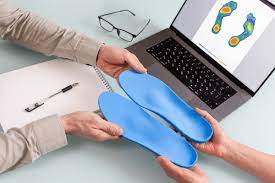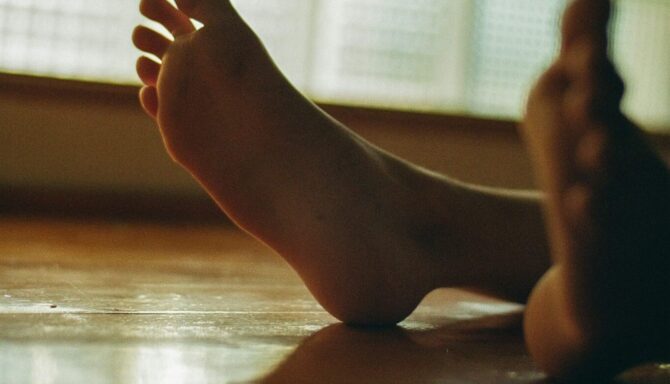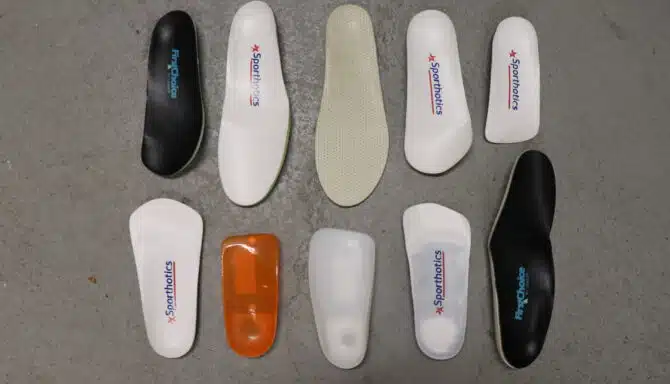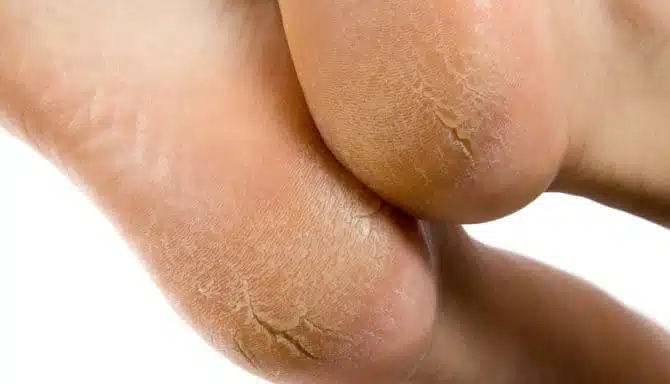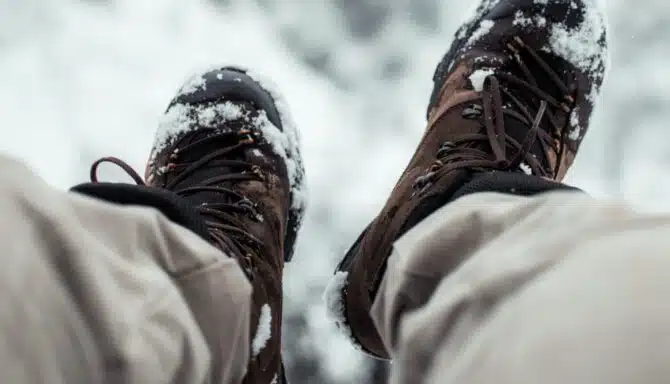September 26, 2024
Orthotics are supportive, custom devices designed to improve the alignment and function of the feet, ankles, and lower limbs. They aim to address specific issues like flat feet, overpronation, or arch support. This can help alleviate discomfort and prevent injuries by redistributing pressure and correcting abnormal movement patterns. Adequately fitted orthotics can significantly enhance comfort and mobility, making daily activities more manageable and pain-free.
Custom orthotics can make a big difference, but how exactly do orthotics correct foot alignment? And how do they work? Let's explain.
What are orthotics?
Orthotics are specialized, custom-designed insoles that you place inside your shoes. They come in many forms, and are molded and constructed specific to your unique foot needs. Their main job is to support and correct the alignment of your feet, which can help address various foot and lower limb issues. They essentially promote healthy biomechanics to ensure your body moves the way it's designed to.
Orthotics are custom-made specifically for your feet by a chiropodist (foot specialist). The chiropodist will do a biomechanical and gait analysis, and then take a mold of your foot (typically with a 3D digital scanner). The chiropodist then custom-designs the orthotics according to your specific needs, and a lab then constructs the orthotics according to the chiropodist's instructions.
https://youtube.com/shorts/pO5oWb6S5MA?si=LKskZKFzoAaIxV6h
It's important to note that while orthotics can be beneficial, they may not be suitable for everyone and can have some drawbacks, such as initial discomfort and the need for regular maintenance. Custom orthotics are more expensive than over-the-counter options, but they are an investment in your future — they may allow you to avoid more severe issues and chronic pain long-term, and can address foot concerns that over-the-counter insoles cannot. Not to mention, they are longer-lasting.
How orthotics correct foot alignment?
Orthotics are meant to modify how your foot moves and distributes pressure. They can help with several conditions, including:
Flat feet: Orthotics can support fallen arches to maintain and prop up the natural contours of your foot.
High arches: When you have high arches, excessive pressure is placed over a very small area of your foot. Orthotics help by cushioning and distributing pressure more evenly. If pressure is unevenly distributed across your feet, you're at a higher risk of overworking neighbouring parts of your foot.
Overpronation: If your feet roll inward too much when you walk or run (called "overpronation), orthotics can help correct this movement. They do this by creating a barrier to your foot's inward movement, which corrects the overpronation. (Interesting fact: people with flat feet are prone to overpronation, so the treatment for the two conditions is often the same).
Heel pain: Orthotics can reduce the strain on the plantar fascia and help alleviate heel pain.
By correcting foot alignment, orthotics can provide significant relief from pain and prevent future issues. The feet are our body's foundation, so when your feet are moving properly, it helps the rest of our body move properly. That allows muscles and joints to work the way they were designed to without being over-stressed. This then helps reduce pain - not only in our feet, but the rest of our body too!
Types of orthotics
There are many different types of orthotics designed for different footwear and activities. Click here to learn more!
https://youtube.com/shorts/IBXAXoUouFY?si=u9Uv6wcGhSEheI1t
Benefits beyond pain relief
Orthotics don't just help with pain—they can also play a proactive role in enhancing overall foot and body health. Proper alignment can lead to better posture, reduced knee and hip stress, and improved gait. Athletes often use orthotics to boost performance by optimizing foot mechanics, which then reduces the strain on the rest of their joints.
How to choose the right orthotics
If you're considering orthotics, here's what to keep in mind:
Consult a professional: A chiropodist can help determine if you need custom orthotics through a biomechanical assessment. They can then prescribe, design and fit your orthotics based on your activities and specific foot concerns. A chiropodist may also recommend footwear and over-the-insole options to test out first before going the custom route.
Consider your activities: Choose orthotics that match your lifestyle. For instance, if you're a runner, look for ones designed to absorb shock and provide stability. If you work in a setting with a formal dress code, you may want to opt for slimmer dress orthotics that will fit into your dress shoes.
Look at the full picture: Orthotics alone likely won't solve all your foot concerns. They're just part of the equation. You'll also want to ensure your wearing proper footwear and maintaining an active, healthy lifestyle. If you have chronic pain or a conditions like arthritis, regular exercise and stretching is very important to build strength in your feet and ankles. Orthotics are essentially meant to supplement a healthy lifestyle - not substitute it.
How to get the most out of your orthotics
Once you have your orthotics, wear them regularly to see the best results. They take some time to get used to, so gradually increase the time you wear them daily. Also, remember that orthotics are just one part of foot health—maintaining a proper exercise routine and suitable footwear are equally important. To ensure the longevity of your orthotics, clean them regularly and follow any specific care instructions provided by the manufacturer or your chiropodist.
August 29, 2024
Plantar fasciitis, a condition that impacts the foot and the heel, is very common but often misunderstood. If you've felt sharp stabbing pain in your heel when you take your first steps in the morning, you might know this condition firsthand. But what does plantar fasciitis mean, and how can you treat it? Let's explore the specifics to help you better understand plantar fasciitis causes and treatments.
What is plantar fasciitis?
Plantar fasciitis happens when the plantar fascia gets inflamed. This thick band of tissue stretches from your heel to your toes along the bottom of your foot. It helps support your foot's arch and handles the stress we put on our feet. When this band gets irritated or swollen, it can lead to pain and discomfort. You'll often feel this pain in your heel area.
Causes of plantar fasciitis
Plantar fasciitis is typically caused by overuse and activities that put too much stress on the feet, which ultimately strains the plantar fascia. Such activities include includes running long distances, standing for hours, or playing high-impact sports. Risk factors that can make you especially vulnerable to developing plantar fasciitis include:
Foot structure: Conditions such as flat feet or high arches can lead to unhealthy biomechanics (i.e.: overpronation), which can then can put extra stress on the plantar fascia when you walk.
Improper footwear: Wearing shoes that don't support or cushion your feet well can make you more likely to develop plantar fasciitis. High heels, old shoes, or flimsy footwear without adequate arch support can all contribute.
Getting older: Those aged 40-60 are more prone to plantar fasciitis, but it can happen to anyone at any age. It's one of many age-related changes to the feet we experience as we age.
Your job: Working a job where you have to stand or walk on hard floors for a long time can increase your chances of getting this condition. That's right! Even your career can influence your foot health.
Symptoms of plantar fasciitis
The telltale symptom of plantar fasciitis is heel pain. In addition, you may experience the following:
Quick-hitting pain: Pain is often most severe when you take your first steps in the morning, or after sitting for an extended period. This pain tends to decrease with continued activity but can return after rest.
Sharp pain: Plantar fasciitis-related pain is typically sharp and may be felt near the heel's underside.
Pain post-exercise: While activity may initially relieve the pain, it can worsen after exercise or at the end of the day.
Tenderness: Pressing on the area where the plantar fascia attaches to the heel bone may cause pain.
Treating plantar fasciitis
You may experience pain with plantar fasciitis first thing in the morning.
The good news is that most cases of plantar fasciitis can be managed with conservative treatments. Here are some effective strategies for treating plantar fasciitis:
Rest and ice: Resting and applying ice to the affected area can help reduce inflammation and pain. Aim to ice your heel for 15-20 minutes several times daily. You may also benefit from over-the-counter anti-inflammatories like ibuprofen or naproxen, which can reduce pain and inflammation.
Stretching exercises: Gentle stretching of the calf muscles, Achilles tendon, and plantar fascia can help alleviate tension and reduce pain. Exercises such as the calf stretch, towel stretch, and rolling the foot over a cold bottle or a tennis ball can be beneficial.
Footwear: Wear supportive shoes with good arch support and cushioning. Avoid walking barefoot on hard surfaces, and consider using custom orthotic inserts to provide additional support. Read our dedicated blog post on the best shoes for plantar fasciitis.
Night splints: Wearing night splints can help keep the plantar fascia stretched overnight, which may reduce morning pain.
Avoid high-impact sports and activities: Temporarily reducing or modifying activities that exacerbate your symptoms can help prevent further irritation of the plantar fascia.
April 8, 2024
Back pain is common among adults, with up to 80% of people experiencing back pain at least once in their lifetime. While the causes of back pain can vary, one often overlooked factor is the type of footwear we wear. Believe it or not, the shoes we put on our feet can significantly impact our spinal health.
This article will explore the connection between footwear and back pain and provide insights into choosing shoes to support a healthy back.
https://youtube.com/shorts/7m3SQ5dXaeg?si=7VABa77p3TsDAsxV
The alignment connection
Our feet are the foundation of our body's alignment, and our shoes play a crucial role in maintaining proper alignment from the ground up. When we wear shoes with inadequate support or that don't fit properly, it can throw off the alignment of our feet, leading to a chain reaction of misalignment throughout the body, including the spine. This misalignment can cause strain on the muscles and ligaments of the back, leading to discomfort and pain.
High heels and back pain
One of the most well-known culprits of back pain is high heels. While they may be fashionable, high heels can wreak havoc on the spine. The elevated heel alters the spine's natural curvature, increasing pressure on the lower back and making the muscles to work harder to maintain balance. Over time, this can lead to muscle imbalances, postural issues, and chronic back pain.
Flat shoes and lack of support
Conversely, flat shoes with inadequate support can also contribute to back pain. Shoes that lack proper arch support don't provide necessary shock absorption and stability, leading to increased stress on the spine.
Additionally, shoes with worn-out soles or insufficient cushioning can exacerbate back pain by failing to provide adequate protection against impact forces.
Choosing the right footwear. The 5 Top Tips
So, what can we do to prevent back pain and promote spinal health through our footwear choices? Here are 5 top tips for selecting the right shoes:
Opt for shoes with adequate arch support to maintain the spine's natural curvature.
Look for cushioned soles that provide shock absorption to reduce impact on the spine.
Choose shoes with a supportive heel counter to stabilize the foot and ankle.
Ensure proper fit by wearing shoes and walking around to assess comfort and support.
Consider orthotic inserts or custom-made orthotics to address specific foot issues and improve overall alignment.
When it comes to back pain, every step counts. By paying attention to our shoes and choosing footwear that supports spinal health, we can take proactive steps to prevent discomfort and promote overall well-being.
March 11, 2024
Do you often find yourself experiencing foot pain after a long day on your feet? Or maybe you struggle with posture or want to enhance your athletic performance? Custom orthotics may be the solution.
This blog post explores why custom orthotics may be necessary, how they benefit your feet, and how to them.
Why and when might you need custom orthotics?
Custom orthotics are specially designed inserts inside your shoes to support and correctly align your feet. They are built custom to your feet to address any specific issues you may be experiencing. While over-the-counter shoe inserts can provide some relief, they often lack the precision and support that custom orthotics offer.
There are several reasons why you might need custom orthotics:
Foot pain: Whether dealing with plantar fasciitis, heel spurs, bunions, hammertoes, flat feet, or arch pain, custom orthotics can help alleviate discomfort by providing support and cushioning to the affected areas.
Posture improvement: Misalignment in the feet can lead to poor posture, which can cause pain and discomfort in your knees, hips, and lower back. Custom orthotics can help correct these alignment issues, resulting in better posture and reduced pain.
Athletic performance: Athletes often rely on their feet to perform at their best. Custom orthotics can provide the support and stability needed to optimize biomechanics and prevent injuries during physical activity.
How do custom insoles benefit your feet?
https://youtube.com/shorts/IBXAXoUouFY?si=_JizERIDqjSyk8Pn
The benefits of custom orthotics extend beyond just relieving pain and discomfort. Below are some ways they can improve the health and function of your feet:
Improved support
Custom orthotic insoles provide support where you need it most, whether in the arches, heels, or balls of your feet. This added support can help distribute pressure and reduce strain on muscles and ligaments.
Better alignment
By correcting misalignments in the feet, custom insoles can help improve overall body alignment, leading to better posture and reduced risk of injury.
Enhanced shock absorption
Custom orthotics are made from materials that offer superior shock absorption, helping to cushion your feet and joints from the impact of walking, running, or jumping.
Overuse injury prevention
Overuse injuries are a common concern. Orthotics can help prevent these injuries by providing stability and support to the feet, reducing the risk of strain and overuse.
How do you get fitted for custom orthotics?
Our 6 Step Custom Foot Orthotic Creation Plan
Getting custom orthotics is straightforward. You can expect the following while being fitted for custom orthotics:
1. Schedule a foot assessment
The first step is to schedule a foot assessment with a chiropodist or foot specialist who can assess your feet and discuss your needs and concerns.
2. Physical Exam
During the assessment, your feet are examined to identify issues such as flat feet, high arches, or abnormal gait patterns. If you have pain or foot concerns, let your chiropodist know. It also helps to inform your chiropodist about any activities or sports you engage in regularly plus the footwear you own and wear.
3. Gait analysis
A video gait analysis helps evaluate how you walk or run to identify biomechanical issues contributing to your foot pain or discomfort. The gait analysis is part of a biomechanical assessment, which also includes a range of motion and weight-bearing assessment. All three help create a more comprehensive overview of your feet.
4. Customization
Based on the assessment and analysis findings, your orthotics are designed to address your unique foot structure and alignment issues. Casting captures the foot in a subtalar joint neutral position. At Feet First Clinic, chiropodists use plaster, 3D scanning or foam to cast your feet.
5. Fitting
Once the orthotics are made, you return to the specialist for a fitting. The chiropodist will ensure the orthotics fit comfortably inside your shoes and provide the necessary support and alignment.
6. Follow-up
Follow-up appointments can be helpful to monitor your progress and adjust the orthotics to ensure optimal comfort and effectiveness.
December 7, 2023
As the chilly winds of winter sweep across the landscape, there's no denying this season's magic and beauty. The world transforms into a winter wonderland, and being cozy by the fireplace with a warm cup of cocoa has never been more tempting.
However, while winter's charms are abundant, so are its challenges. One challenge many of us face during cold months is the painful and unsightly problem of cracked heels.
As temperatures drop, our skin becomes susceptible to dryness and dehydration, and our feet are no exception. Cracked heels are not just a cosmetic concern; they can also lead to discomfort and pain.
In this blog, we will explore the causes of cracked heels during the winter and offer some tips and remedies to keep your feet healthy and beautiful all season long.
How winter weather affects your feet
Here's how winter weather affects your feet and what you can do to prevent and treat dry, cracked heels:
Low humidity
Winter air is drier, which depletes the moisture in your skin. When the air lacks humidity, your skin loses its ability to retain water, leading to dryness and, in some cases, painful cracks in the heels.
Hot showers and baths
Long, hot showers or baths can be tempting in cold weather. Fair warning, though: Hot water on your skin can strip your skin of its natural oils, worsening dryness and making your feet more susceptible to cracking.
Cold temperatures
Exposure to cold constricts blood vessels in your feet, reducing blood flow and making it harder for your skin to repair and rejuvenate. Cold temperatures can result in dry and damaged skin.
Indoor heating
Indoor heating systems can create a dry environment that further robs your skin of moisture. Transitioning between the cold and warmth - outdoors and indoors - may cause abrupt changes in temperature and humidity, which can stress your skin.
What to do to prevent dry, cracked heels in winter weather
To prevent and treat dry, cracked heels during the winter, consider the following:
Hydration
Staying well-hydrated is essential for overall skin health. Drink plenty of water to help your skin retain moisture.
Moisturize
Regularly apply a good-quality foot cream or lotion to your feet, especially after bathing or showering. Opt for products with ingredients like urea, shea butter, glycerin, or hyaluronic acid, as they can help lock in moisture.
Exfoliation
Gently exfoliate your heels to remove dead skin cells. You can use a pumice stone or a foot file, but be careful not to overdo it, as excessive scrubbing can worsen the problem.
Wear proper footwear
In winter, it's crucial to wear proper footwear, such as moisture-wicking socks and insulated, comfortable shoes or boots. Proper winter footwear will help keep your feet warm and dry.
Limit hot showers and baths
Use lukewarm water for showers and baths when possible, and keep them relatively short to avoid over-drying your skin. Avoid overly drying your skin with a towel, and abrasion can further dry your skin. Bathing more than once a day can also remove the natural oils from your skin.
Use a humidifier
A simple at-home addition is a humidifier. Using a humidifier in your home can add moisture to the indoor air, helping to prevent skin dryness.
Protect your feet
Wear warm, waterproof boots when outside in cold weather to protect your feet from extreme conditions. Over-the-counter insoles that provide extra cushioning under the heel can also help fend off cracked heels.
Professional treatment
A chiropodist can treat cracked heels by removing callused skin surrounding fissures to repair the skin's elasticity and offload pressures on the heels to help the fissures close. You may also opt for a medical pedicure, which, among other benefits, includes an intense and comprehensive moisturizing treatment. Consider consulting a chiropodist for professional advice and treatment if your heels become severely cracked and painful.
December 4, 2023
Winter's chill may be invigorating but can also send shivers down your spine. It's therefore a top priority to keep your feet warm and cozy. As the temperature drops and the snowflakes fall, the choice of footwear becomes a crucial component of staying comfortable in the cold. But don't worry, you don't have to sacrifice style for warmth.
In this comprehensive cold-weather footwear guide, we walk you through the best choices for winter footwear, from boots to socks so that you can embrace the season's beauty without a second thought about frozen toes. Say goodbye to chilly discomfort and hello to a cozy, fashionable winter.
What makes winter footwear unique?
Before we dive into the world of winter boots and socks, it's essential to recognize why proper cold-weather footwear matters. Winter footwear typically includes many, if not all, of the following features.
Warmth
Winter footwear is warmer than any other seasonal footwear. Cold feet can be not only uncomfortable but also potentially dangerous. Prolonged exposure to cold temperatures increases the risk of frostbite, so keeping your feet warm is essential for overall well-being.
Traction
Winter footwear boasts better traction than other footwear. December to March months often come with slippery sidewalks and icy roads. The proper footwear offers the traction needed to prevent slips and falls, reducing the risk of injury.
Protection
Winter shoes protect your feet from the elements, including cold, wet, and snow. The boot's protective layer keeps your feet dry and comfortable.
Comfort
Cold weather can bring added stress to your feet, so comfortable footwear with proper cushioning and insulation is crucial for a pleasant winter experience. Due to being heavier and rigid, expect winter footwear to feel more rugged than your spring, summer, and fall footwear.
How to choose your perfect winter footwear
Your perfect winter boot or footwear exists. It's just a matter of finding your match. Consider the following when deciding between boots this winter.
Winter features: Invest in high-quality winter boots designed to keep your feet warm and dry. Look for boots with insulation, waterproof materials, and slip-resistant soles.
Socks: What you wear on your feet is a crucial component of the whole winter footwear package. Choose moisture-wicking, insulating socks to keep your feet warm and dry. Wool socks are an excellent choice for winter as they provide insulation while wicking moisture away from your feet.
Sizing: Ensure your winter boots have extra room for thicker socks. A snug fit can reduce warmth, so select boots that allow for additional sock layers.
Proper Lacing: Ensure your boots are laced or fastened correctly. Properly laced boots provide better support and warmth by preventing cold air from entering.
Waterproofing: Apply a waterproof spray or conditioner to your boots. Waterproofing adds a layer of protection and helps prolong the life of your boots or shoes. Reapply this treatment periodically throughout the winter.
Traction Aids: For particularly icy conditions, consider adding traction aids or slip-on ice cleats to your boots for improved grip and safety.
Fashion and Style: You don't have to sacrifice style for warmth. Many winter boots come in fashionable designs that keep you cozy and on-trend.
Our top picks: Comfortable footwear for Toronto winters
Now, for what boot to pick? Below, you'll find our top picks for winter footwear, all available at our Bloor Street West location in Toronto.
Sorel IV Tivoli Parc Boot WP
The Sorel IV Parc Boot WP, renowned for its exceptional cold-weather performance, is a quintessential winter boot designed to keep your feet warm and dry in the harshest conditions. Its waterproof synthetic upper and seam-sealed construction protects against wet and slush environments, while the removable felt liner ensures remarkable insulation even in frigid temperatures. These boots are temperature-rated to withstand extreme cold, and their rugged outsole with a multidirectional lug pattern offers exceptional traction on icy terrain. With its classic style and versatility, the Sorel IV Parc Boot WP is a trusted companion for those who brave the coldest winter elements while maintaining a sense of enduring fashion.
Portofino ID1673
The Portofino ID1673 unisex winter boot is waterproof and lined with natural wool to keep your feet warm and cozy. The double zippers and laces allow for an optimal fit and comfort. The removable insole allows you to insert your orthotics.
Portofino MS105
The Portofino MS105 women's winter boot features a line bootie and is available in several colours. The outer is suede, and the winter boot is water-resistant, protecting you from the cold and the slush.
Superfeet Insoles
You can also supplement your winter footwear with custom orthotics or Superfeet insoles. Winter boots are not always orthopedic, so if you want added support, most winter boots have a removeable insole and the extra foot and toe room to accommodate for the inserts.
